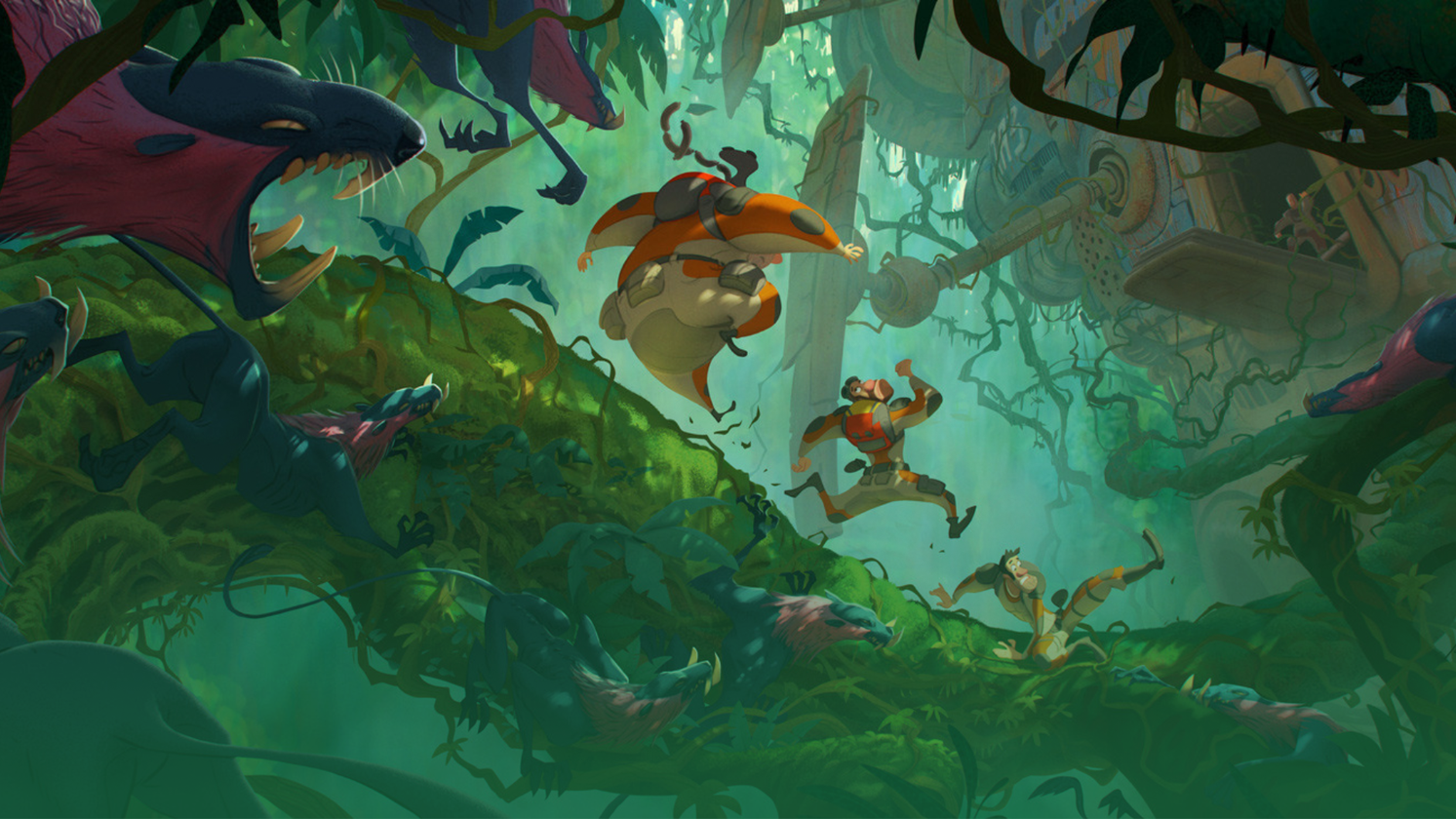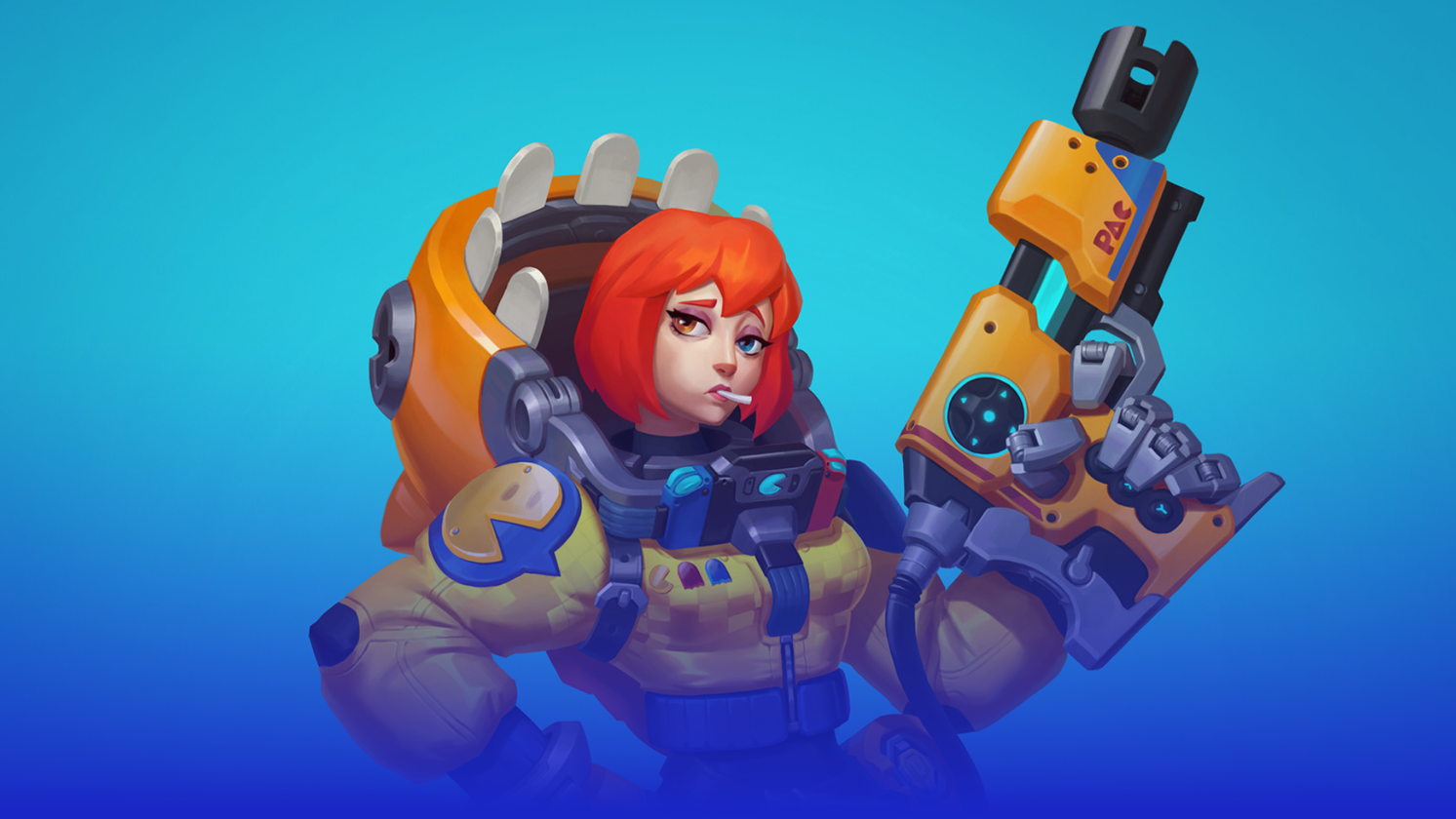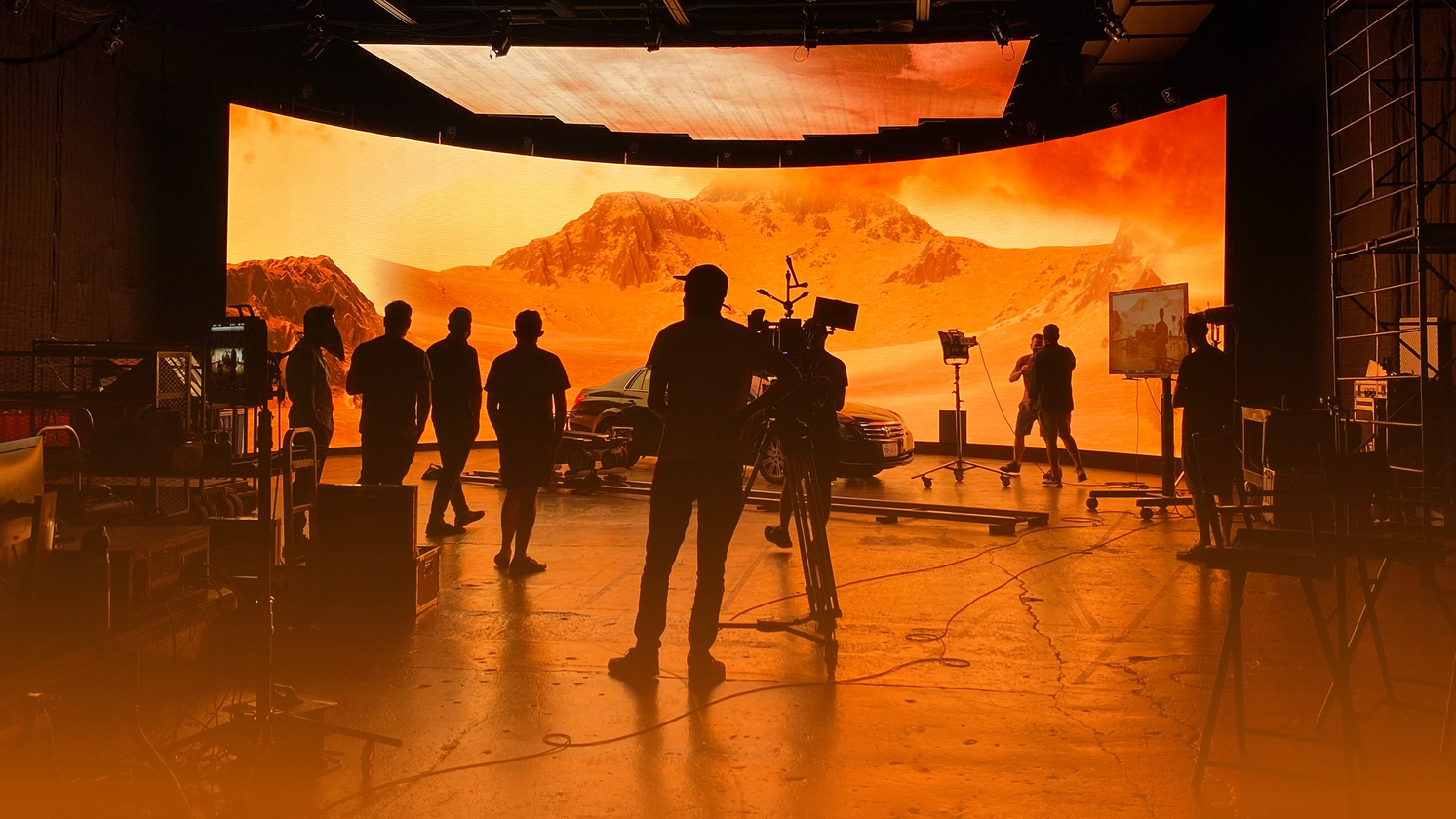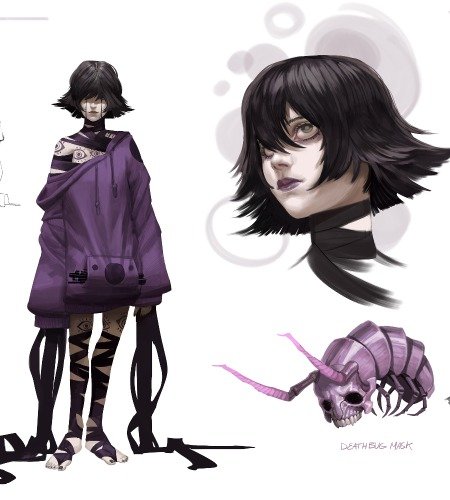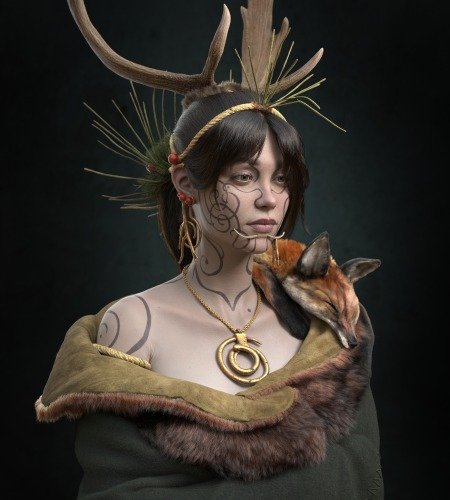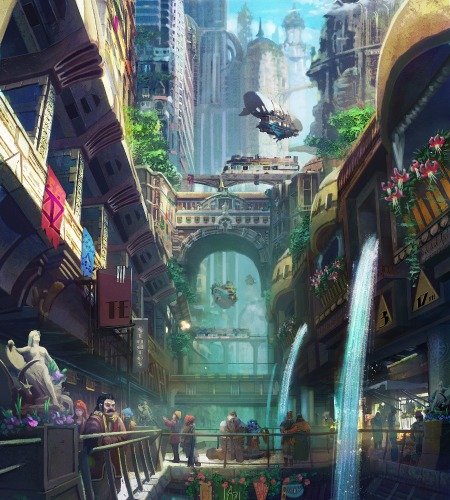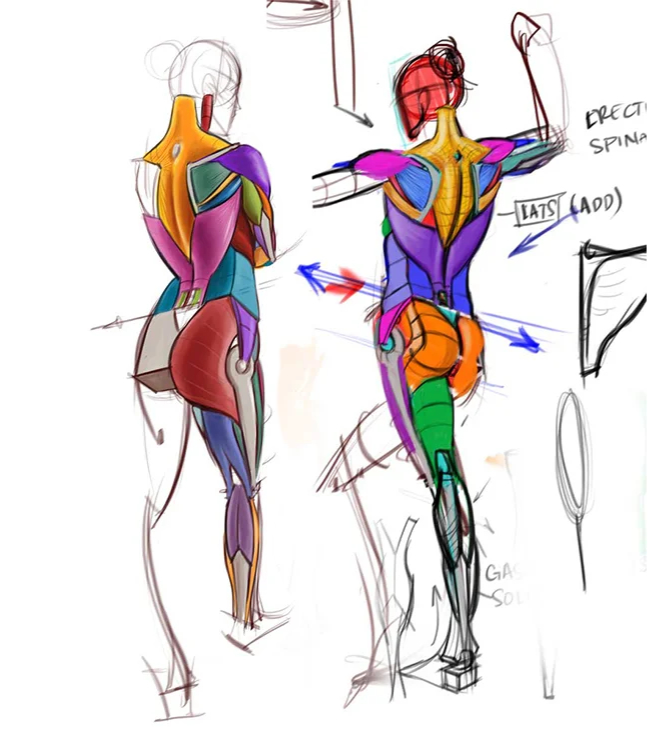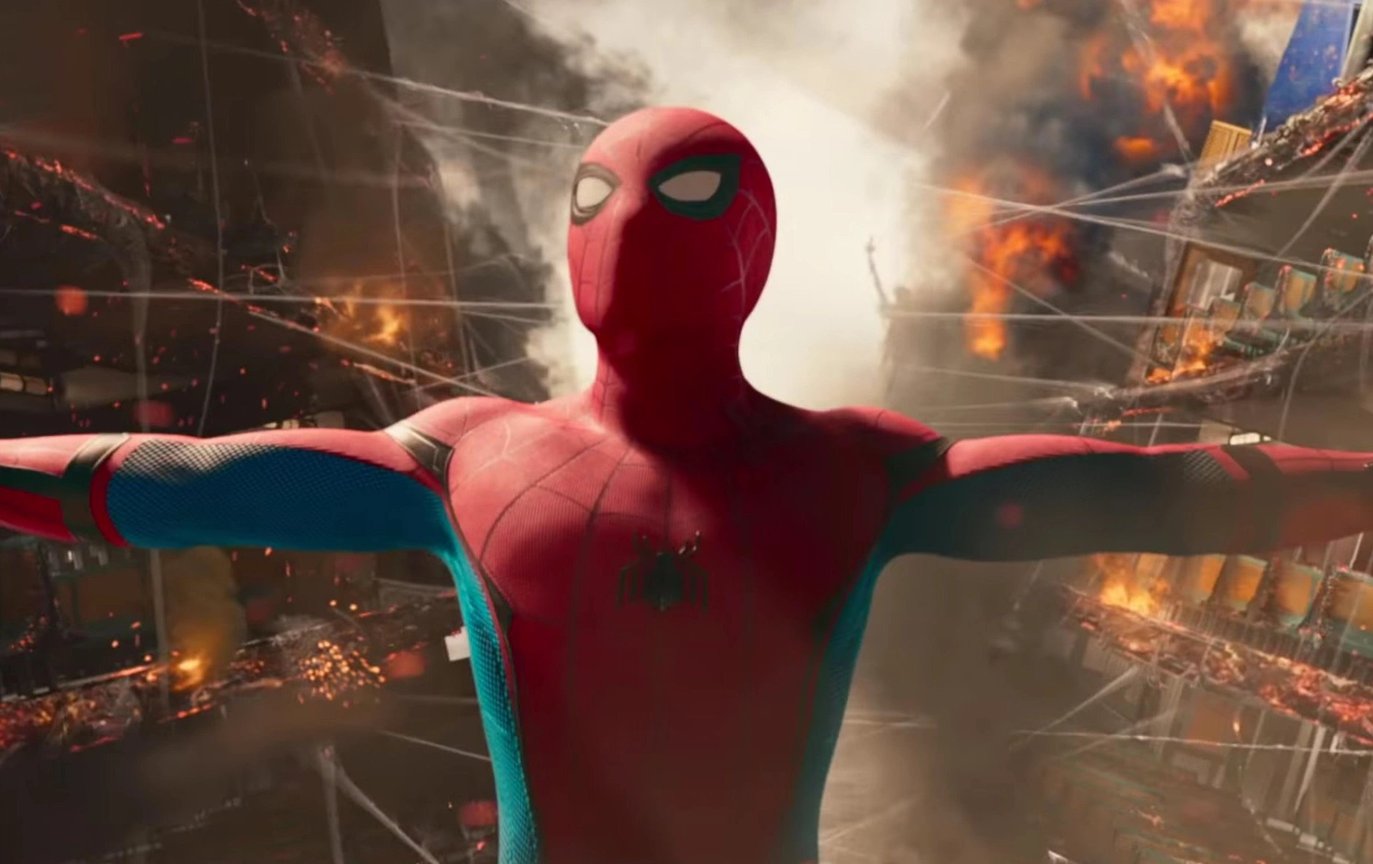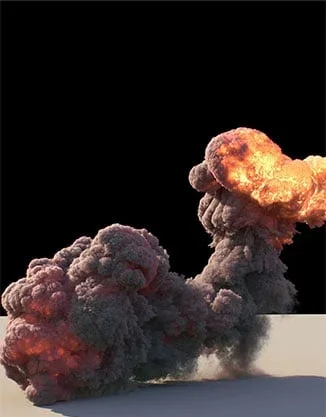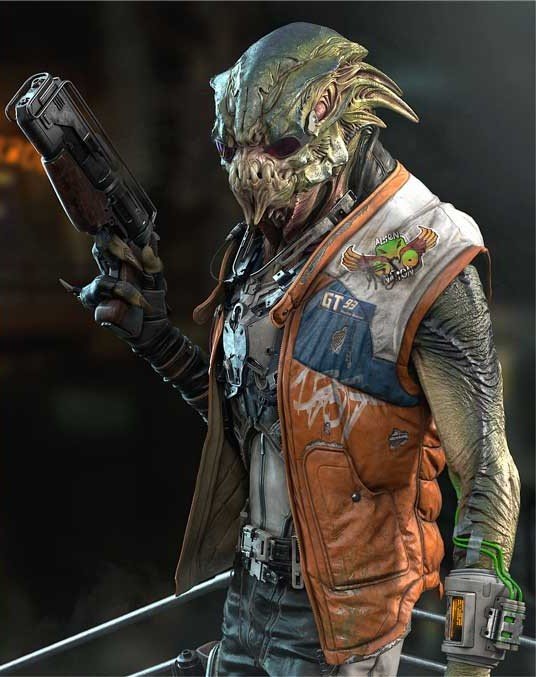5 Steps to Create a Tech-Centric Crystal Citadel
Game Artist Nikola Damjanov's job doesn't call for a lot of tech art, but it's still one of his biggest passions. To expand his procedural knowledge outside his comfort zone, Nikola dove into the world of Houdini. Throughout this project, Nikola used his artistic and technological skills to craft a stunning, yet efficiently created crystal citadel. Read on to learn to follow his workflow, including:
 My name is Nikola Damjanov and I was born and raised in Belgrade, Serbia. I'm currently working for an incredible mobile gaming company called Nordeus. I am a Game Artist by day and at the moment I am leading the art efforts on our latest mobile game called Heroic: Magic Duel. I had a mixed education background – tech and art – so I am always hypnotized by both worlds. My current interests are mostly along the lines of procedural generation. I’m very interested in building systems – trying to deconstruct and reverse engineer content generation is a challenging puzzle.
My name is Nikola Damjanov and I was born and raised in Belgrade, Serbia. I'm currently working for an incredible mobile gaming company called Nordeus. I am a Game Artist by day and at the moment I am leading the art efforts on our latest mobile game called Heroic: Magic Duel. I had a mixed education background – tech and art – so I am always hypnotized by both worlds. My current interests are mostly along the lines of procedural generation. I’m very interested in building systems – trying to deconstruct and reverse engineer content generation is a challenging puzzle.
1. Citadel Inspiration
During the course, we had weekly assignments and one of them was a task to create an alien planet or an otherworldly landscape. While I was searching for inspiration I came across this nice concept from Miguel Alonso – I really liked the verticality of the composition, scale, and sense of ancient presence. I think you can clearly see my work was inspired by this concept but I wanted more depth, conflict, and extraterrestrialism.
Houdini is incredible! I just scratched its surface and already it has wowed me countless times….It flipped my content production workflows upside down.
Nikola Damjanov, Lead Game Artist
2. Icelandic Influence
A long time ago, I saw a tutorial from Entagma (see the video below) and learned a very simple and effective technique for making crystals. I simplified the process since I had many crystals in my scene, but the core process was the same. I also built three LOD levels so I can optimize the scene and rendering.
For the columns themselves, I was inspired by basalt columns of Iceland but I wanted to grow them higher and very distinct shape variation for eye rest.
Then, I used the same crystal shape for building the columns. I took the lowest LOD, scaled it way up, then deformed it to make better bases. After that, I turned it into a fog volume with varied density to achieve the cloudy/see-through look. Then I used that density parameter to generate a point cloud and drive the distribution/scale/rotation of the smaller crystals. Simple but flexible and powerful, like everything in Houdini.
If you want to develop your city-scape composition, whether it's made of crystal or something else, sign up for CGMA's Matte Painting course.
3. Lessons in Terrain
My initial idea was to learn about Houdini’s terrain tools during this project. I knew that there would be a lot of crystals around, and thus minimal landscape, but I needed some underlying structure for distribution at least. I figured learning along the way would be good enough – and it was!

Houdini has its entire feature set in its corner. At any point, you can convert the terrain to polygons and unleash the power of Houdini on it, and then convert back to heightfield if needed. It really feels limitless. I was a little constrained by my ability, but definitely not the tool. I used very simple Heightfield tools for this project, starting from a Worley noise with a very low scale on one axis to get the major valley shapes. Then I overlayed a couple of different noises in medium and small scales to get surface variation and details. I figured it’s important to get nice surface variation before you start eroding because you will get much nicer results. So I added some terracing but masked it only to steep slopes.
In the end, I slumped the bottom of the valley to get a smoother surface for scattering crystals. I also came across a happy accident – if you convert your terrain to mesh and then use the Mountain SOP, with large height but scale only on the Y axis, you can get some very nice varied and inflated terracing. That was the final touch on the terrain.
4. Ground Distribution
Ground distribution was rather simple actually. After slumping and masking off the bottom part of the valley I just did a Heightfield Scatter on that part to get the seed points. Copy SOP did the rest – just enable “Transform Using Template Point Attributes” and things will magically flow over your terrain.
If you want to bring it to the next level you could set up the Copy SOP to stamp the scattered objects and then you can get randomness in scale or even control it by height. It’s very fun to play with once you set it up. I’m curious how it will look in motion, it would be a nice thing to try out.
Read "5 Ways to Make Your Foliage-Filled Scene Believable" for a more in-depth example of effective distribution.
5. Rendering
From the start, I planned not to render in Houdini. It was a very big and complex scene that depended a lot on complex shaders and refractions – my Matra knowledge was nowhere near good enough to tackle that problem. That is why I decided to use something I know – 3ds Max and V-Ray.
Even though most of my work these days is real-time and engine based, V-Ray is where I feel at most confident. I exported the final scene state via Alembic, which worked effortlessly. For the lighting, I used the V-Ray sun+sky combo because I liked the simplicity of the blue/yellow light colors. Vray’s aerial perspective atmospheric effect really helped to sell the depth of the environment. It took some trial and error to find the best angle for the sun. Eventually, I placed some shadow cards off the camera to get the right light/shadow balance I wanted.

If you want to create an equally beautiful environment in UE4, don't miss out on CGMA course Organic World Building in UE4.
Once I got these aspects set up, rendering wasn't a big problem. I did low-resolution tests while I was working on a composition and lighting and occasionally rendered parts of the image in full resolution to make sure shaders work properly. When I was confident about the render, I sent it off to a render farm – they are crazy cheap these days, especially if you are rendering single images. Rebus Farm is my choice, it has a nice automated plugin, very easy to use.
Initially, I tried to do a render in V-Ray as close as possible to my vision but I couldn’t really make a blend shader to my liking. Eventually, I decided to render out shader passes (one for solid and one for crystal) and a bunch of masks (shadow, curvature, AO..) and assemble everything in PS. That assembly was certainly the biggest part of post-production. Other than that I mostly used Photoshop to boost up colors and frame the composition even more.
Final Thoughts
- After enojying Substance Designer over the years, I thought it would be a nice thing to expand my procedural knowledge beyond the world of texturing. Houdini was a perfect choice – I had used it before on occasions but didn't have a deep understanding of how it works.
- I wanted to start learning it with something “light” and friendly for experimentation, which is why I chose the Abstract VFX course taught by Adam Swaab.
- Before starting this course, I heard good things about CGMA from friends and I liked what Adam Swaab (the instructor) was doing – all the right checkboxes were ticked!
- This was definitely the biggest procedural set piece I made, and I was surprised by how easy it was to manage and organize everything. It’s hard for me to single out one major learning as there were so many things that I tackled.
- Houdini is incredible! I just scratched its surface and already it has wowed me countless times. It’s basically an OS for 3D but at the same time, I feel like it couldn’t care less about visuals. It just wants to know what data you are giving it and what to do with data. It flipped my content production workflows upside down.
- I feel like I am a bit late to the party, I wish I started learning it some time ago. Better late than never, I guess!
LEARN MORE
CGMA provides comprehensive instruction for Art, Games, and VFX industries in a variety of courses for a range of students, from 2D and 3D artists looking to supplement their college studies to industry professionals looking to stay up to date on emerging trends and techniques in the field.
RELATED LINKS
If you want to develop your city-scape composition, sign up for CGMA's Matte Painting course.
Read "5 Ways to Make Your Foliage-Filled Scene Believable" for a more in-depth example of effective distribution.
If you want to create an equally beautiful environment in UE4, don't miss out on CGMA course Organic World Building in UE4.


